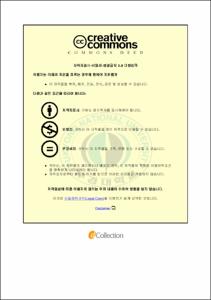합기도 수련이 혈구성분에 미치는 영향
- Abstract
- Effects of Hapgido Training on Blood Cell Components
Jang-Sub Lee
Department of Physical Education, The Graduate School,
Pukyong National University
Directed by Professor Koon-Soo Shin ph. D.
Abstract
This study was carried out to examine the effects of a 12-week Hapgido training on the blood cell components of male college students at their 20s. For this purpose, the subjects of 14 male college students were randomly assigned to experiment group (7 persons) and control group (7 persons). The control group did not perform any regular exercises except their daily routine while the experiment group carried out a Hapgido training program for 60 minutes a day, five days a week, for 12 weeks. The results are as follows:
1. After the 12-week Hapgido training, the number of erythrocytes increased in the experiment group significantly (p< .05) while that in the control group decreased but there was not any significant difference. As a result of a test on changes of the number of red blood cells between the groups, there was not any significant difference before and after the exercise.
2. After the 12-week Hapgido training, the number of leukocytes increased in the experiment group while decreased in the control group, but there was not any significant difference. As a result of a test on changes of the number of leukocytes between the groups, there was not any significant difference before and after the exercise.
3. After the 12-week Hapgido training, the number of platelets increased in the experiment group while decreased in the control group, but there was not any significant difference. As a result of a test on changes of the number of platelets between the groups, there was not any significant difference before and after the exercise.
4. After the 12-week Hapgido training, the quantity of hemoglobin increased in the experiment group significantly (p< .001) while decreased in the control group, but there was not any significant difference. As a result of a test on changes of the quantity of hemoglobin between the groups, before the exercise, it increased in the control group significantly(p< .05) while after the exercise, there was not any significant difference.
5. After the 12-week Hapgido training, the number of hematocrits increased in the experiment group while decreased in the control group, but there was not any significant difference. As a result of a test on changes of hematocrits between the groups, there was not any significant difference before the exercise while it increased in the experiment group significantly (p< .05) after the exercise.
6. After the 12-week Hapgido training, the Mean Corpuscular Volume increased in the experiment group significantly (p< .001) while decreased in the control group, but there was not any significant difference. As a result of a test on changes of the Mean Corpuscular Volume between the groups, there was not any significant difference before and after the exercise.
7. After the 12-week Hapgido training, the Mean Corpuscular Hemoglobin increased in the experiment group while decreased in the control group, but there was not any significant difference. As a result of a test on changes of the Mean Corpuscular Hemoglobin between the groups, there was not any significant difference before and after the exercise.
8. After the 12-week Hapgido training, the Mean Corpuscular Hemoglobin Concentration increased in the experiment group significantly (p< .05) while decreased in the control group, but there was not any significant difference. As a result of a test on changes of the Mean Corpuscular Hemoglobin Concentration between the groups, it increased in the control group significantly (p< .001) before the exercise; however, there was not any significant difference after the exercise.
- Issued Date
- 2011
- Awarded Date
- 2011. 2
- Type
- Dissertation
- Publisher
- 부경대학교
- Department
- 대학원 체육학과
- Advisor
- 신군수
- Table Of Contents
- 목 차
I. 서 론 1
1. 연구의 필요성 1
2. 연구의 목적 5
3. 연구의 문제 5
4. 연구의 제한점 6
5. 용어 및 약어의 정의 7
II. 이론적 배경 8
1. 합기도의 발전 8
2. 합기도의 특성 11
3. 혈액의 구성 13
4. 혈구의 기능 15
5. 운동과 혈구성분 19
III. 연구 방법 25
1. 연구대상 25
2. 측정도구 25
3. 측정항목 26
4. 측정방법 27
5. 실험계획 및 방법 28
6. 자료처리 방법 29
IV. 연구 결과 33
1. 적혈구 수의 변화 33
2. 백혈구 수의 변화 34
3. 혈소판 수의 변화 36
4. 혈색소량의 변화 37
5. 헤마토크리트의 변화 39
6. 평균적혈구용적의 변화 40
7. 평균적혈구혈색소량의 변화 42
8. 평균적혈구혈색소농도의 변화 43
V. 논 의 46
1. 적혈구 수의 변화 46
2. 백혈구 수의 변화 49
3. 혈소판 수의 변화 51
4. 혈색소량의 변화 52
5. 헤마토크리트의 변화 54
6. 평균적혈구용적의 변화 56
7. 평균적혈구혈색소량의 변화 57
8. 평균적혈구혈색소농도의 변화 58
VI. 결 론 60
참고문헌 62
- Degree
- Master
- Files in This Item:
-
-
Download
 합기도 수련이 혈구성분에 미치는 영향.pdf
기타 데이터 / 827.75 kB / Adobe PDF
합기도 수련이 혈구성분에 미치는 영향.pdf
기타 데이터 / 827.75 kB / Adobe PDF
-
Items in Repository are protected by copyright, with all rights reserved, unless otherwise indicated.